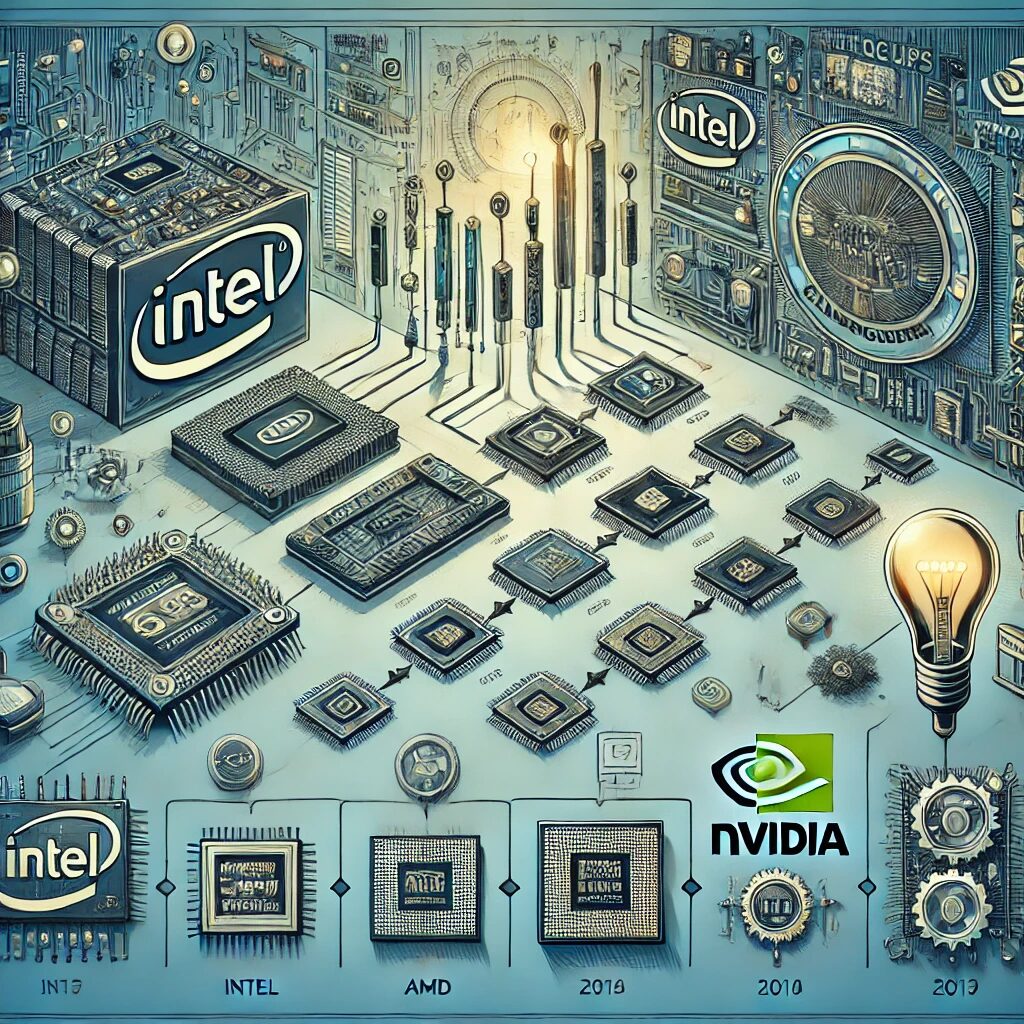The semiconductor industry, integral to the evolution of modern technology, has been shaped by pioneering companies like Fairchild Semiconductor, Texas Instruments, Intel, AMD, and Taiwan Semiconductor Manufacturing Company (TSMC). Each has played a unique role in advancing semiconductor technology, and their intertwined histories reflect the industry’s dynamic nature.
Fairchild Semiconductor: The Pioneer
Founded in 1957 by the “Traitorous Eight” who left Shockley Semiconductor Laboratory, Fairchild Semiconductor is often regarded as the birthplace of Silicon Valley. Under the leadership of Robert Noyce and Gordon Moore, Fairchild developed the planar process, which led to the first commercially viable integrated circuits (ICs). This innovation set the foundation for modern semiconductor manufacturing.
Fairchild’s contributions include:
- The Planar Process: Revolutionized IC production by improving reliability and reducing costs.
- Silicon Transistors: Enabled more efficient and powerful electronic devices.
Fairchild’s success catalyzed the formation of numerous spin-offs, including Intel, solidifying its legacy as a crucible of semiconductor innovation.
Texas Instruments: The Early Innovator
Texas Instruments (TI), founded in 1951, initially focused on oil exploration technology but soon shifted towards electronics and semiconductors. TI made significant strides with its invention of the silicon transistor in 1954, leading to the development of the integrated circuit by Jack Kilby in 1958.
Key milestones for Texas Instruments include:
- The First Commercial Silicon Transistor: Marked the beginning of TI’s dominance in the semiconductor market.
- The Integrated Circuit: Kilby’s invention earned him a Nobel Prize and paved the way for modern electronics.
TI’s contributions extended beyond semiconductors into calculators, digital signal processors, and education technology.
Intel: The Microprocessor Giant
Intel, founded in 1968 by Robert Noyce and Gordon Moore after leaving Fairchild, revolutionized computing with the invention of the microprocessor. Intel’s 4004, introduced in 1971, was the world’s first microprocessor, transforming computing by integrating the CPU onto a single chip.
Intel’s major achievements include:
- The Microprocessor: Sparked the personal computer revolution.
- Moore’s Law: Gordon Moore’s prediction that the number of transistors on a chip would double approximately every two years has guided the industry’s exponential growth.
- Advanced Process Technologies: Intel has consistently pushed the boundaries of semiconductor manufacturing, leading the market in transistor scaling and process innovations.
AMD: The Challenger
Advanced Micro Devices (AMD) was founded in 1969 by Jerry Sanders and other Fairchild alumni. AMD initially produced logic chips and later focused on CPUs, often challenging Intel’s dominance in the microprocessor market.
Significant achievements of AMD include:
- x86 Architecture Licensing: AMD gained prominence by licensing the x86 architecture from Intel and producing compatible CPUs.
- Athlon and Opteron Processors: AMD’s Athlon series challenged Intel’s supremacy, while the Opteron series brought 64-bit computing to the mainstream.
- Ryzen Processors: Recent Ryzen processors have revitalized AMD’s competitive stance against Intel in both performance and value.
Taiwan Semiconductor Manufacturing Company (TSMC): The Foundry Leader
TSMC, founded in 1987 by Morris Chang, pioneered the dedicated semiconductor foundry model. Unlike integrated device manufacturers (IDMs) like Intel and TI, TSMC focuses solely on manufacturing semiconductors for other companies, enabling a broad range of innovation.
Key contributions of TSMC include:
- The Foundry Model: Allowed fabless companies like AMD, NVIDIA, and Apple to design chips without owning manufacturing facilities.
- Leading-Edge Process Technologies: TSMC has consistently been at the forefront of semiconductor process technology, rivaling and often surpassing Intel in process node advancements.
- Global Semiconductor Supply Chain: TSMC’s rise has made it a critical player in the global semiconductor supply chain, with extensive influence over the technology industry.
Interconnections and Relationships
The histories of these companies are deeply intertwined. Fairchild’s legacy is evident in the formation of both Intel and AMD, with many of their early leaders and engineers originating from Fairchild. Intel and AMD have maintained a competitive yet symbiotic relationship, driving each other to innovate in the CPU market.
Texas Instruments’ early innovations set the stage for integrated circuits and microprocessors, which Intel capitalized on. Meanwhile, TSMC’s foundry model has enabled both AMD and countless other fabless companies to thrive without the burden of semiconductor manufacturing.
Conclusion
The evolution of Fairchild Semiconductor, Texas Instruments, Intel, AMD, and TSMC reflects the dynamic and collaborative nature of the semiconductor industry. From the pioneering days of silicon transistors and integrated circuits to the cutting-edge process technologies of today, these companies have collectively shaped the technological landscape. Their intertwined histories and ongoing innovations continue to drive the advancements that underpin our modern digital world.


